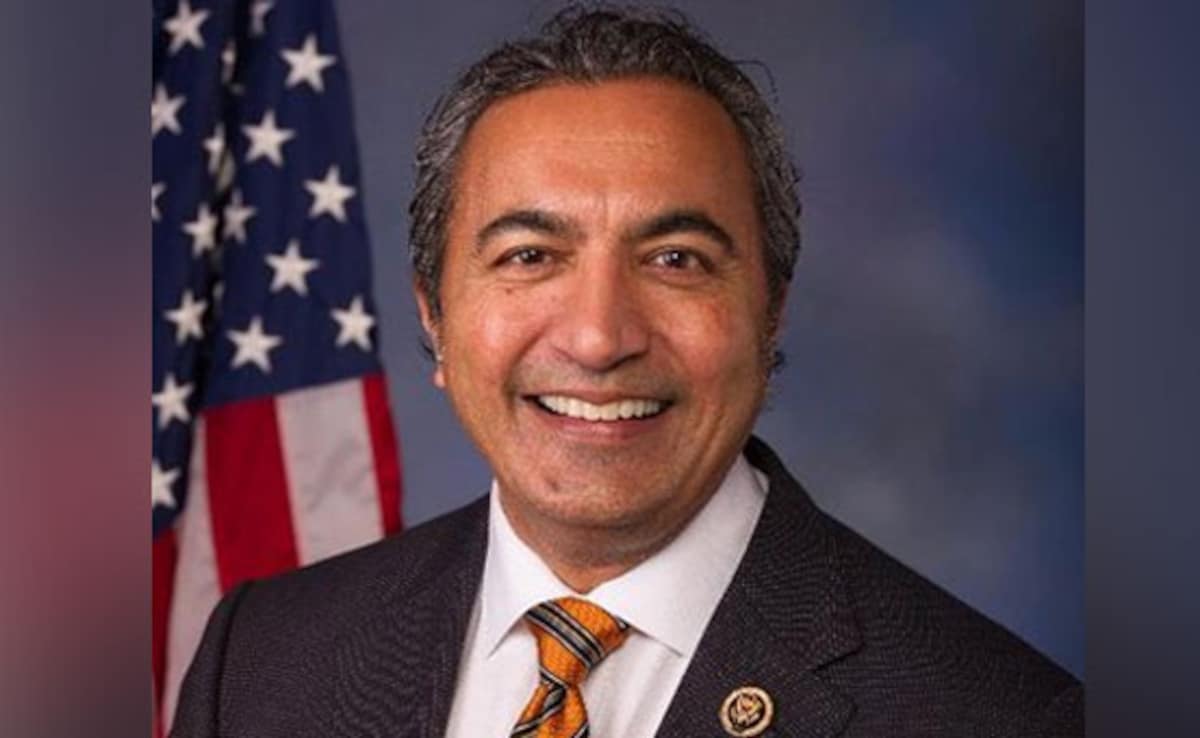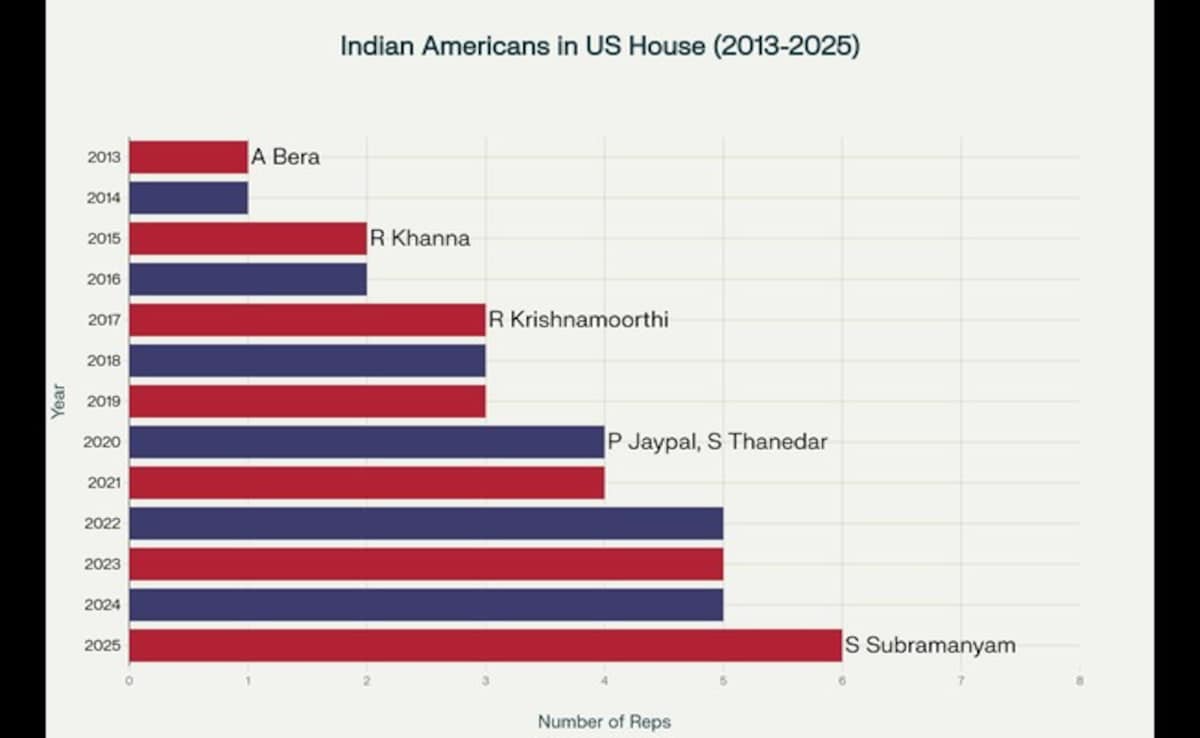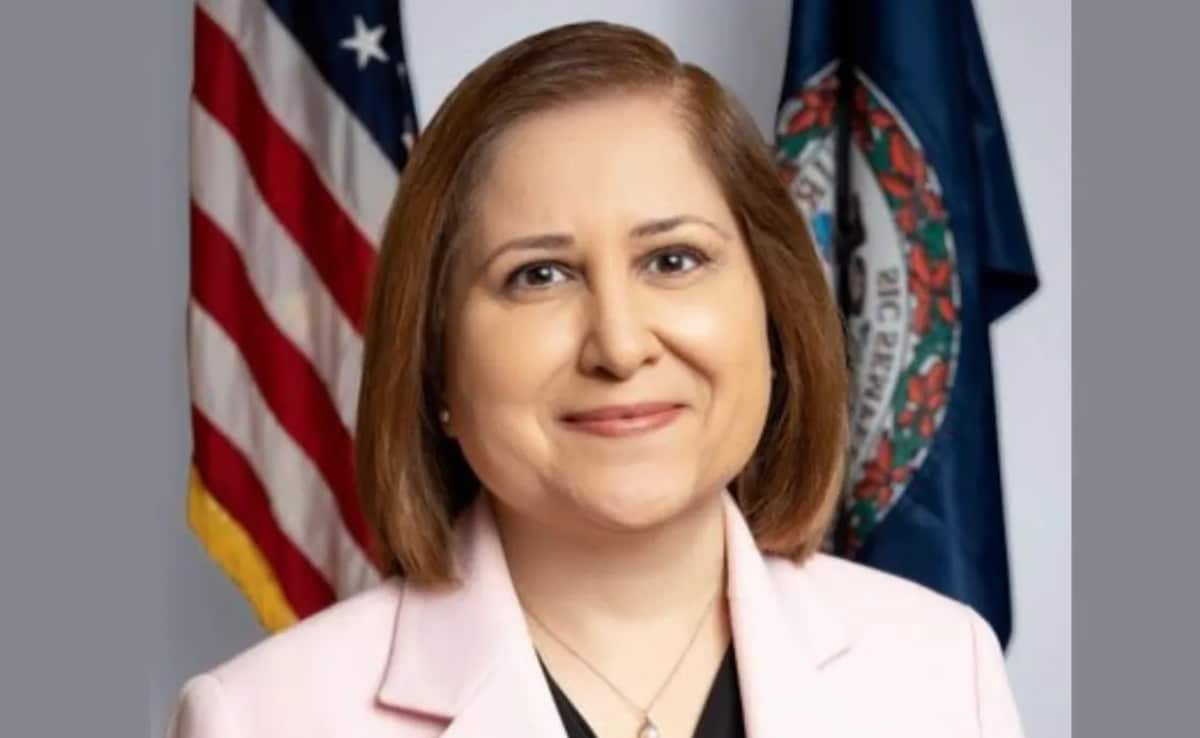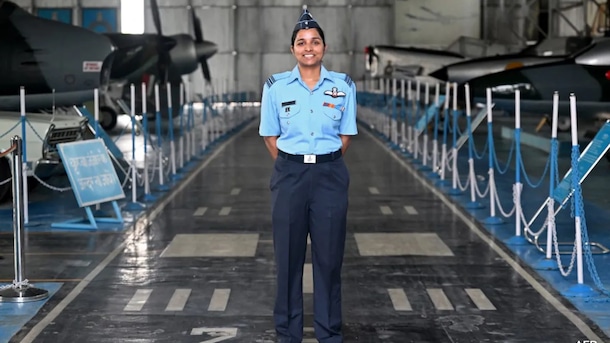Zohran Mamdani And Record-High 'Samosa Caucus': Indian-Americans In US Politics
At 34, Zohran Mamdani becomes the youngest mayor of New York - and the newest face of an Indian-American community that has seen a five-fold rise in elected officeholders in just 12 years.

Zohran Mamdani – an American, an Indian, and a Muslim – made history Tuesday.
And, at 34, the newly-elected Mayor of New York – one of the wealthiest and most iconic cities in the world – is the youngest member of a growing and increasingly influential Indian-American community to hold elected office in the United States, whether at state or federal levels.
A little over a decade ago, there were fewer than half-a-dozen names on that list.
Today there are nearly 60, counting down from the 'samosa caucus' – the informal name for a group of six lawmakers in the US House of Representatives who share Indian heritage – and not including federal appointees like Vivek Ramaswamy and FBI Director Kash Patel.
The upward trend started in 2013 with the election of Democrat Amerish 'Ami' Bera from California.
He wasn't the first, though. The first was Dalip Singh Saund, from California in 1957, and Bobby Jindal, from Louisiana in 2005. But Bera's election seemed to get the ball rolling.
In 2015 the number doubled; Ro Khanna, also a Dem from California, joined him.
Two years later Raja Krishnamoorthi, an Illinois Democrat, made three. By 2020 there were five; Pramila Jaypal and Shri Thanedar, Democrats too, were elected from Washington and Michigan.

Ami Bera was the third Indian-American elected to the House (File).
And on January 1, 2026, concurrent with Mamdani assuming office, Democrat Suhas Subramanyam will follow two terms in the Virginia legislature with his debut in the House.
He will become the sixth (and record-breaking) member of the 'samosa caucus'.
That is a staggering 500 per cent increase in 12 years.

Indian-Americans in the House, starting with Bera in 2013.
And it doesn't include names like Kamala Harris and Bobby Jindal, who have Indian roots or heritage but choose not to include that part of themselves in their political identities.
Also, that isn't the only staggering number.
Reports suggest that between 2013 and 2025 the number of Indian-Americans in state legislatures jumped by 400 per cent; from fewer than 10 in 2013 to nearly 50 today.
That list includes Ghazala Hashmi, an Indian-origin Democrat elected today as the Lieutenant-Governor of Virginia. She is already the first Muslim and first South Asian in the state Senate.

Ghazala Hashmi was borrn to Zia Hashmi and Tanveer Hashmi in Hyderabad in 1964.
Alongside Mamdani and Hashmi, there were at least two other Indian-Americans in electoral races in the US Monday. One was Satish Garimella, running for Mayor of Morrisville in North Carolina, and the other was Dini Ajmani, bidding to replace Ravi Bhalla, another Indian-American, as Mayor of Hoboken in New Jersey. Bhalla is running for the state legislature.
At the time of publication, Garimella and Ajmani's results had not been confirmed.
Unsurprisingly, states with sizeable Indian-American populations, like New Jersey, California, Texas, Illinois, and New York, have significant representation from that community.
And then there are Indian-Americans appointed to senior federal posts.
By some counts that number is over 130 as of November 2025, with the majority of those appointments made during the preceding Joe Biden administration.
Why is this important?
A stronger political voice is significant given the range of issues that affect the community, particularly with the Donald Trump administration tightening visa rules for skilled immigrant workers and international students, groups India contributes to in large numbers.
More Indian-Americans in elected offices in the US doesn't automatically mean visas will be easier to come by or fewer incidents of racism, but it does mean the community has more influence over policy-making at all levels of the American government.
The addition of political clout to the community's deep pockets – Indian-Americans have always been a critical source of campaign funding for both Democrats and Republicans – is also significant given the long-pending trade deal being negotiated between the two countries.
Really, any US policy decision, foreign, economic, or defence, that affects India and Indian interests can be viewed, and is viewed in India, through the prism of Indian-Americans in that country's politics, and the success of that community is followed closely in this country.
The celebration around Kamala Harris becoming Vice President is a classic example.
RECAP | "Lot Of Firsts At Major Time In US History": Kamala Harris' Uncle On Win
The next chapter in this story, though, is critical, both from Indian and US perspectives.
For the US, the focus will be on how an increasingly diverse set of elected representatives governs and what those mixed heritages and religious identities mean in practice. Affordable housing and free childcare in New York, for example, were platforms on which Mamdani ran.
How much can he deliver on those promises?
What about the Trump administration's immigration 'reforms'? How much pressure can Indian-American (or the larger South Asian) lawmakers, put on Washington on this topic?
For India, beyond the prestige and cultural visibility, the question is – can this growing cohort help shape policies that are truly open to partnership, people, and trade — not by obligation, but because the interests of the world's two largest democracies are increasingly converging.
NDTV is now available on WhatsApp channels. Click on the link to get all the latest updates from NDTV on your chat.
-
Elon Musk Set To Be First Trillion-Dollar Man? What It Means For The World
In 2021 the United Nations World Food Programme said it would need around $US 40 billion annually to end world hunger by 2030, which is less than Elon Musk's entire net worth
-
Opinion | Why Do NRIs Hate Mamdani? Because He Threatens Their 'American' Dream
Mamdani's unapologetic leftism, his advocacy for tenants' rights, and his support for Palestine challenge the sanitised image of "model minority". Mamdani is more West Village than Wall Street, and this is what scares a section of NRIs in America.
-
"Governance Se Power Milta Hai Kya?" The 1992 Lalu Yadav-Nitish Kumar Split
Both Lalu Prasad Yadav and Nitish Kumar started political journey with the anti-Emergency protests, but their trajectories would be very different
-
Opinion | Trump Has Well And Truly Shot Himself In The Foot With China
So, China has been able to use its rare earth policy to extract concessions on US high-tech exports. In other words, Trump has shot himself in the foot, something inconceivable before the trade war.
-
Opinion | Inside Pakistan's Twisted 'Empowerment' Project: The 'Lady Killers' Of Jaish
Why does Masood Azhar want to build an army of women suicide bombers? For both personal and political reasons, apparently.
-
Opinion | "Just Delhi By The Sea": How Goa Drove Its Tourists Away
Goa's sleepy and leisurely environment, once its greatest asset, is now its weakness.You can get WiFi on a surfboard in Bali, but still struggle to find a clean loo in Baga.
-
Trishul: India's Mega Tri-Service Military Exercise Rattles Pakistan
Trishul, NDTV was told, is meant to send a clear message to Pak, that India stands ready to defend its territory and, if necessary, pick up where Operation Sindoor left off in May.
-
Opinion | Does India Control The Taliban?
By trying to cover its own inadequacies in terms of domestic and neighbourhood policies using India's alleged involvement, Pakistan is again playing the victim card. But why does India let these accusations go mostly unchallenged?
-
The Rafale Pilot Pak Lied About Capturing, And The MiG-21 Pilot It Did
Squadron Leader Singh's journey to the Rafale cockpit began eight years ago, in 2017, when she was commissioned into the Indian Air Force.
-
News Updates
-
Featured
-
More Links
-
Follow Us On










